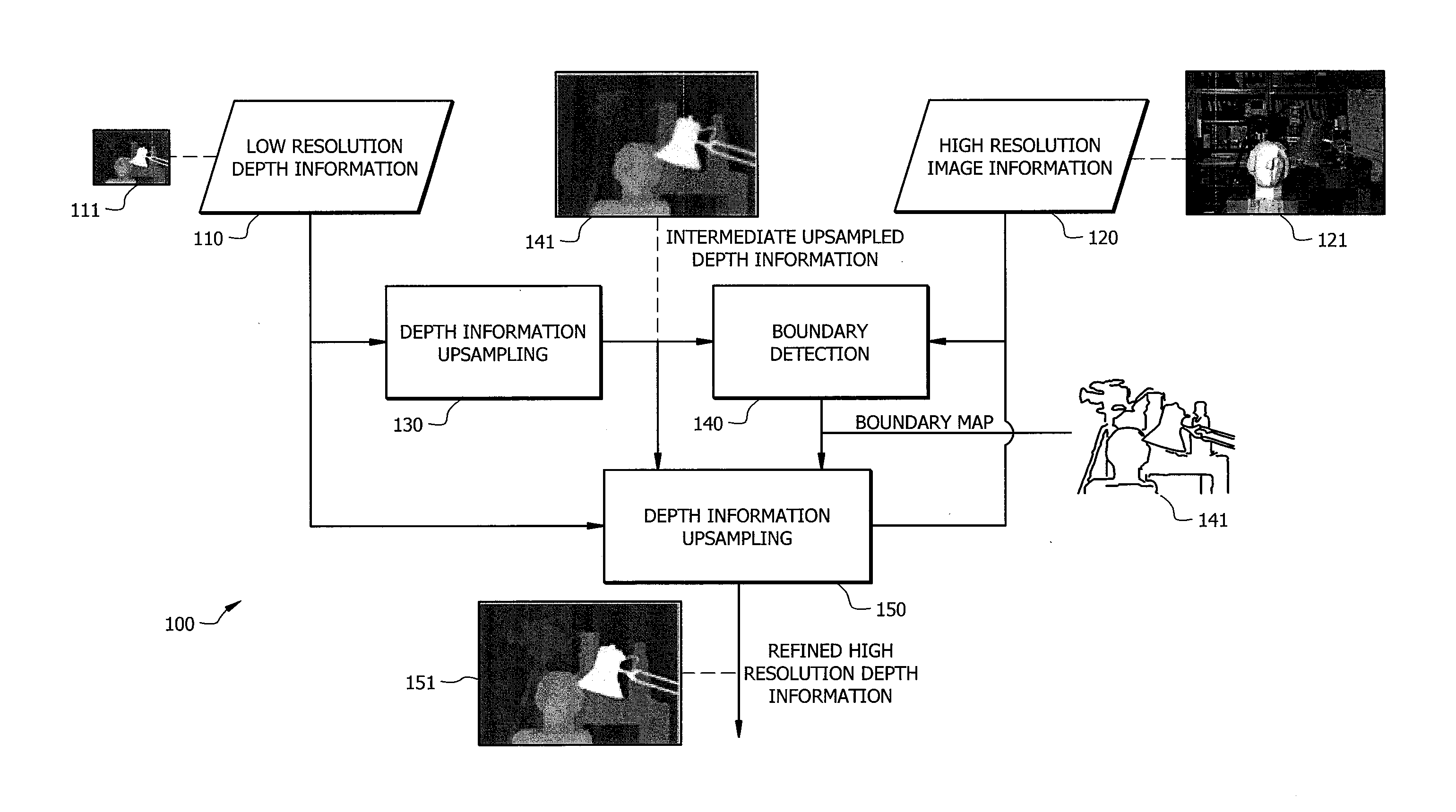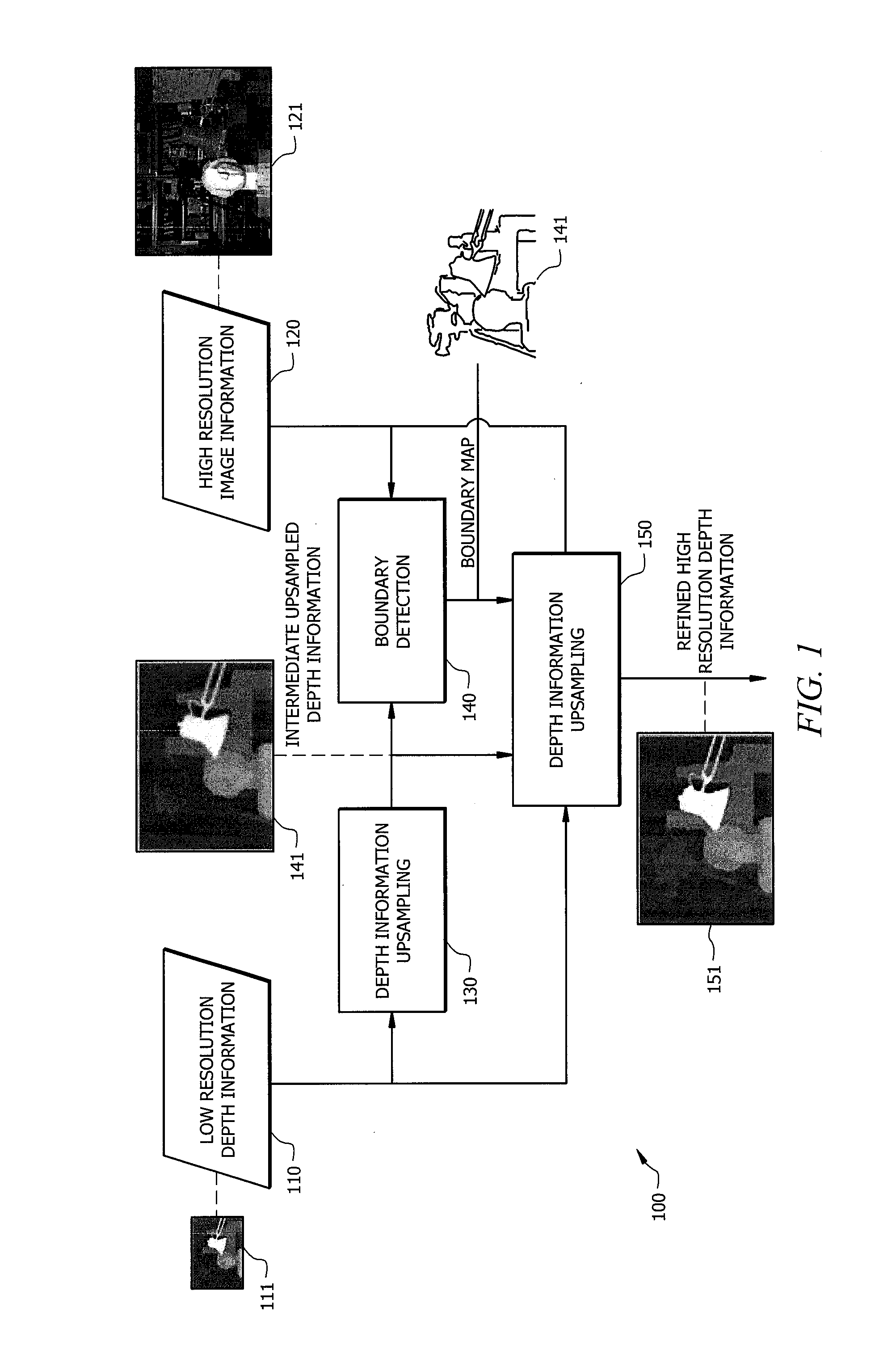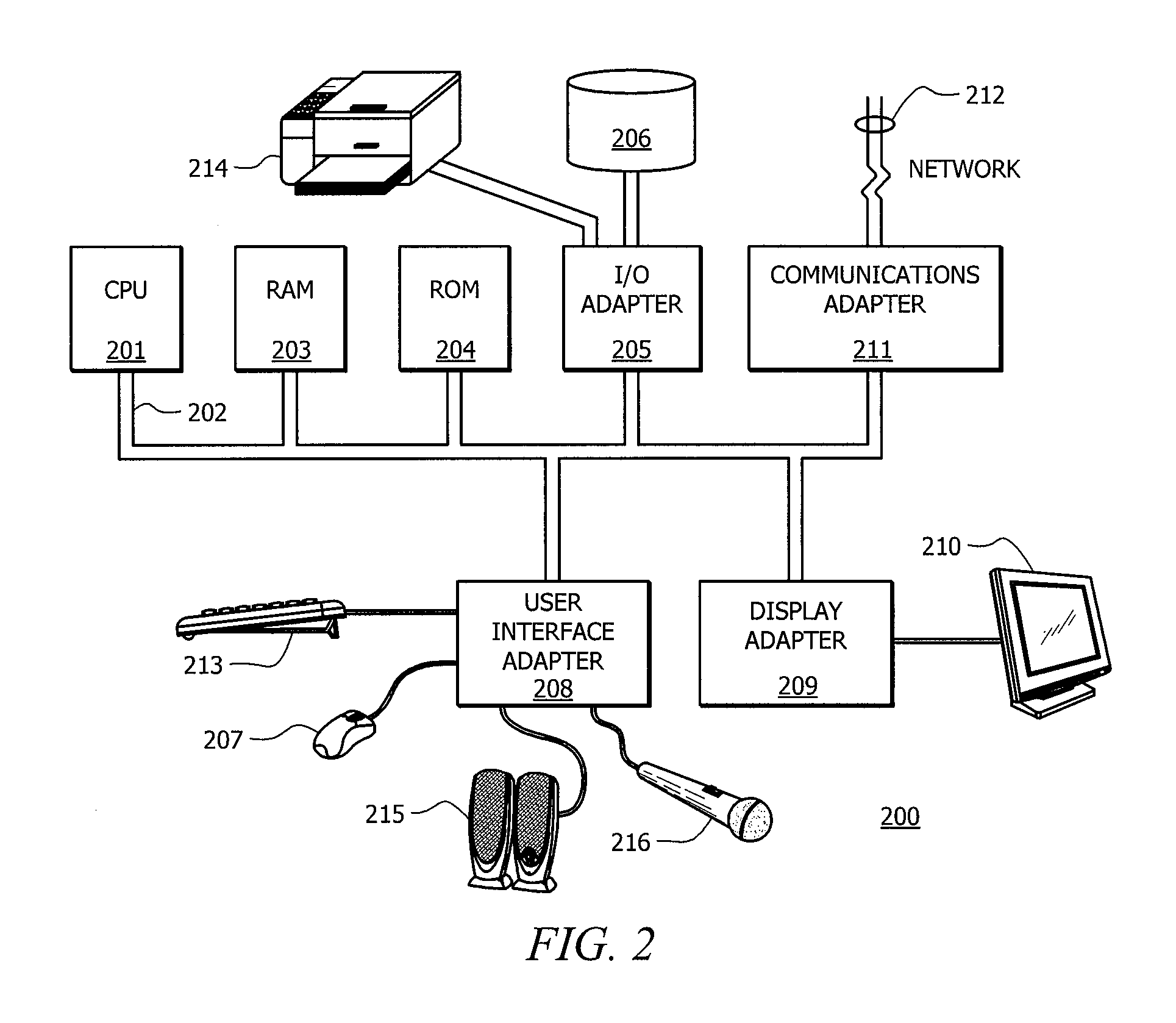Boundary-based high resolution depth mapping
a high-resolution, depth-based technology, applied in the field of three-dimensional image processing, can solve the problems of not accurately mapping to a corresponding high-resolution image, difficult to capture or otherwise obtain high-resolution depth information, and insufficient technical satisfaction, so as to achieve more accurate and reliable high-resolution depth information
- Summary
- Abstract
- Description
- Claims
- Application Information
AI Technical Summary
Benefits of technology
Problems solved by technology
Method used
Image
Examples
Embodiment Construction
[0017]FIG. 1 shows a high level functional block diagram of a system adapted to provide boundary-based depth processing according to embodiments of the present invention. In operation, system 100 of the illustrated embodiment generates high resolution (e.g., ≧1024×768 pixels) depth information 151 from low resolution (e.g., ≦600×400 pixels) depth information 110 (e.g., provided by low resolution depth map 111, as may be captured by a depth camera) and high resolution image information 120 (e.g., provided by high resolution image 121, as may be captured by an image camera) using boundary-based processing techniques according to the concepts herein.
[0018]Boundary-based depth processing provided by system 100 of the illustrated embodiment implements intermediate upsampling of the depth information, boundary detection, and boundary-based interpolation for providing high resolution depth information from low resolution depth information and high resolution image information. Accordingly,...
PUM
 Login to View More
Login to View More Abstract
Description
Claims
Application Information
 Login to View More
Login to View More - R&D
- Intellectual Property
- Life Sciences
- Materials
- Tech Scout
- Unparalleled Data Quality
- Higher Quality Content
- 60% Fewer Hallucinations
Browse by: Latest US Patents, China's latest patents, Technical Efficacy Thesaurus, Application Domain, Technology Topic, Popular Technical Reports.
© 2025 PatSnap. All rights reserved.Legal|Privacy policy|Modern Slavery Act Transparency Statement|Sitemap|About US| Contact US: help@patsnap.com



